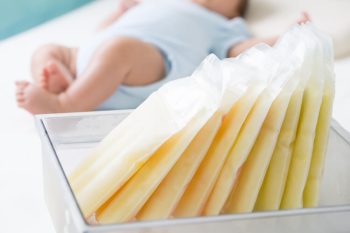For parents and soon-to-be parents, travelling with kids can be a nerve-wracking experience. Is milk allowed in airplane?
This is one thing that adds to the anxiety is the challenge of traveling with milk and other dairy products, especially for breastfeeding mothers.
Milk is a staple part of a newborn’s diet, and there is a certain level of concern about bringing it on airplanes.
In this blog, we will provide you with all the essential information that you need to know when it comes to traveling with milk on airplanes.
Rules and Regulations
The Transportation Security Administration (TSA) has specific rules and regulations in place that dictate how much liquid you can bring on board a flight.
The “3-1-1” rule applies, meaning you can carry a quart-sized bag of liquids, aerosols, and gels that are limited to 3.4 ounces (100 milliliters) per item.
When it comes to milk, formula, and multiple types of liquid feeds, the TSA has made some exceptions.
You can bring an unlimited amount of these products in your carry-on bag, provided it is screened separately.
Make sure that they are stored in one bag, which is easily accessible for inspection.

Packing Milk
When packing milk, it is essential to keep the TSA’s rules in mind. You can pack milk in a container that is larger than 3.4 ounces, but only for babies or young children traveling with you.
It is still recommended that individuals who are traveling with milk, formula, or other liquid nutrition should divide the milk into smaller containers.
Pouring milk into small, plastic containers makes it easy to store and carry.

Temperature Control
Milk and milk products should be stored at a specific temperature range to maintain their freshness and nutritional value.
While traveling with milk, you should pack it in an insulated cooler. This ensures that the milk stays at a consistent temperature for an extended period.
When packing the cooler, it should stay below 40 degrees Fahrenheit (4 degrees Celsius).
If you are looking for a more sustainable option, reusable ice packs or cooling pads specifically designed for transporting milk, can be used instead of single-use ones.
Dealing with Airport Security
Going through security can be the most daunting task when traveling with milk on airplanes.
The key to avoiding any delays is to inform TSA agents that you are carrying milk in your bags. You will be asked to undergo a secondary screening process.
They may ask you to open the bag and inspect the contents. You can also request private screening if you feel more comfortable.
TSA agents are well-trained and understand the requirements when it comes to traveling with milk.

Bringing Breast Milk
Breast milk is not subject to TSA’s 3-1-1 rule and can be carried in quantities greater than 3.4 ounces(100 milliliters).
Breast milk can be packed in different containers, including plastic bags, bottles, or milk bags.
Again, it is crucial to keep the milk at the right temperature. You can request that the milk is screened without opening the containers.
It is also advisable to carry a breast pump in your carry-on bag to express the milk if required.

Traveling with milk and other dairy products can be intimidating, but it doesn’t have to be. Knowing the right information when planning a flight can make a significant difference.
It is essential to note that despite any rules and regulations, TSA agents prioritizes the health and well-being of passengers and their children.
So, don’t hesitate to inform the agents about your dairy products. With proper planning and preparation, you can travel with ease and confidence, ensuring your child’s dietary needs are met on the flight. Happy travels!


